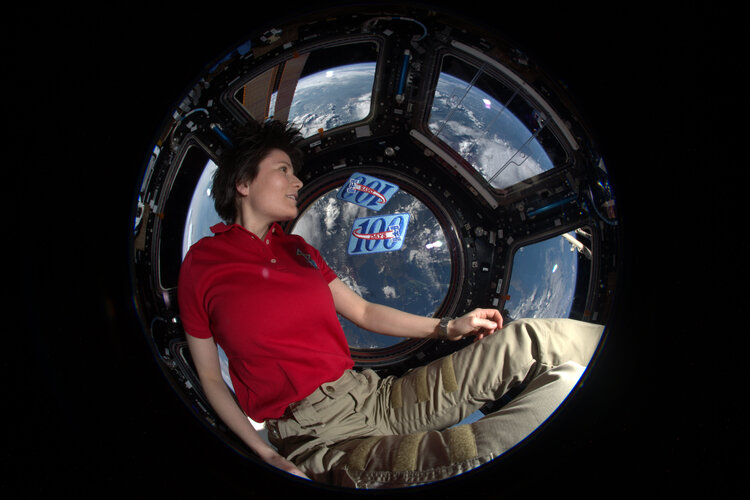
Image:
Italian ESA astronaut Samantha Cristoforetti poses in the Cupola module of the International Space Station with two 100-day patches to mark her 200th day in space. She is now set to return to her ‘home away from home’ for even more days in space.
Samantha first flew to the International Space Station on a Soyuz spacecraft in 2014 for a mission known as ‘Futura’. Her second flight follows the second missions of her fellow 2009 astronaut classmates Alexander Gerst in 2018, Luca Parmitano in 2019 and Thomas Pesquet in 2021. It could also see a direct on-Station handover with Matthias Maurer who is scheduled to fly his first mission to the Space Station later this year. The spacecraft Samantha will fly on is not yet confirmed, but could be a SpaceX Crew Dragon or Boeing CST-100 Starliner.
During Futura, Samantha supported an extensive scientific programme of experiments in physical science, biology and human physiology as well as radiation research and technology demonstrations.
She also oversaw the undocking of ESA’s fifth and final Automated Transfer Vehicle (ATV). This marked the end of a successful programme that paved the way for the European Service Modules currently being produced for NASA’s Orion spacecraft that will travel around and to the Moon.
Training for Samantha’s second mission is already underway and has included International Space Station refresher sessions at ESA’s astronaut centre in Cologne, Germany, and NASA’s Johnson Space Center in Houston, Texas.
In the coming months, her schedule will intensify as she brushes up on Space Station systems and procedures and trains for the specific experiments and tasks she will perform in space.
More details of Samantha’s second mission will be announced during a virtual press briefing on Wednesday, 3 March, at 11:00 CET. Watch on ESA Web TV here.
ESA is also in the process of recruiting its next class of astronauts. For more on the upcoming selection visit esa.int/YourWayToSpace.
Click here for original story, Cristofoready
Source: ESA Space News